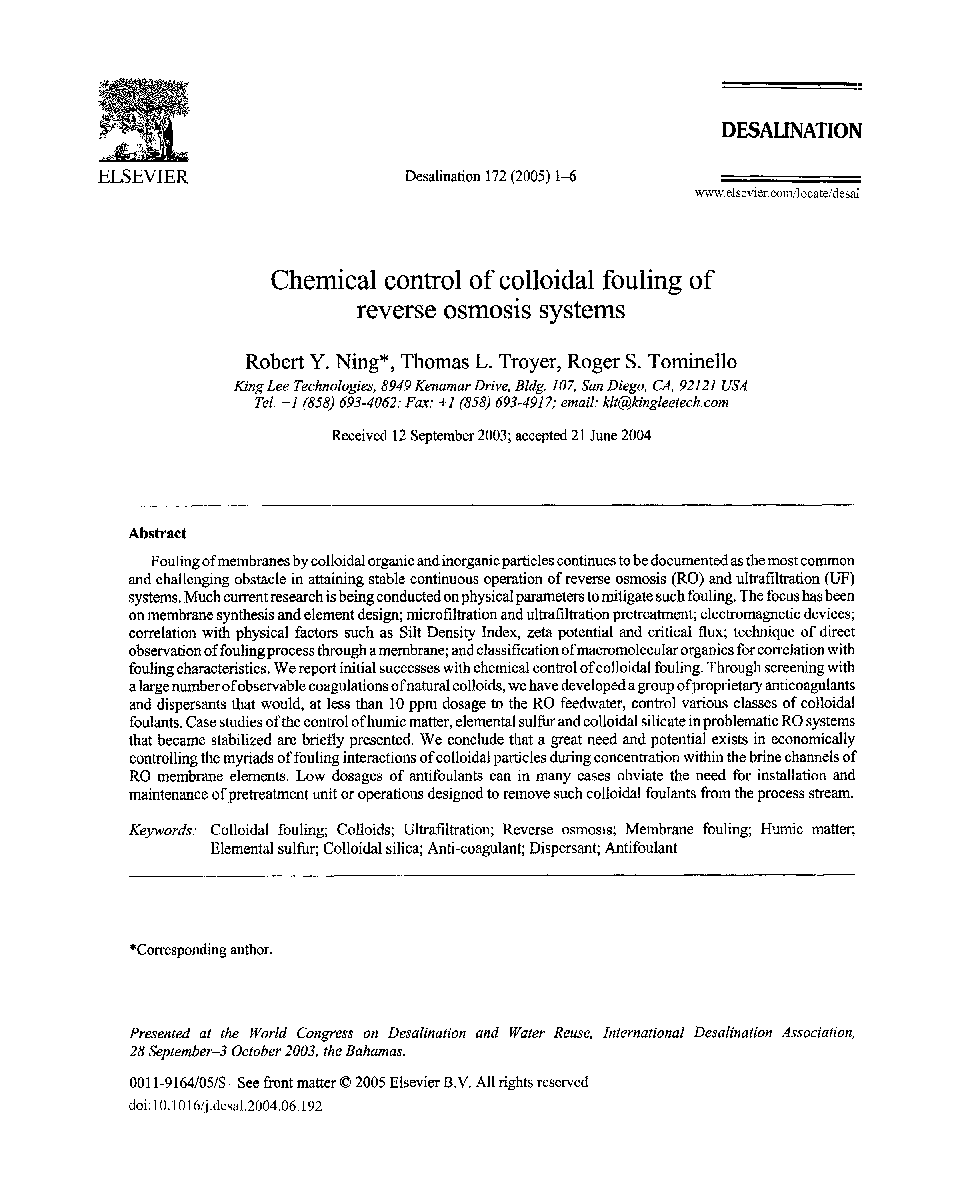| Article ID | Journal | Published Year | Pages | File Type |
|---|---|---|---|---|
| 10386236 | Desalination | 2005 | 6 Pages |
Abstract
Fouling of membranes by colloidal organic and inorganic particles continues to be documented as the most common and challenging obstacle in attaining stable continuous operation of reverse osmosis (RO) and ultrafiltration (UF) systems. Much current research is being conducted on physical parameters to mitigate such fouling. The focus has been on membrane synthesis and element design; microfiltration and ultrafiltration pretreatment; electromagnetic devices; correlation with physical factors such as Silt Density Index, zeta potential and critical flux; technique of direct observation of fouling process through a membrane; and classification of macromolecular organics for correlation with fouling characteristics. We report initial successes with chemical control of colloidal fouling. Through screening with a large number of observable coagulations of natural colloids, we have developed a group of proprietary anticoagulants and dispersants that would, at less than 10 ppm dosage to the RO feedwater, control various classes of colloidal foulants. Case studies of the control of humic matter, elemental sulfur and colloidal silicate in problematic RO systems that became stabilized are briefly presented. We conclude that a great need and potential exists in economically controlling the myriads of fouling interactions of colloidal particles during concentration within the brine channels of RO membrane elements. Low dosages of antifoulants can in many cases obviate the need for installation and maintenance of pretreatment unit or operations designed to remove such colloidal foulants from the process stream.
Keywords
Related Topics
Physical Sciences and Engineering
Chemical Engineering
Filtration and Separation
Authors
Robert Y. Ning, Thomas L. Troyer, Roger S. Tominello,
